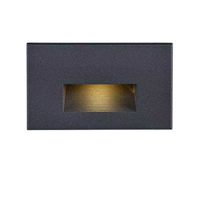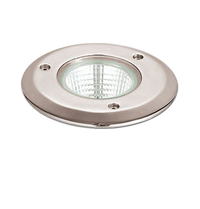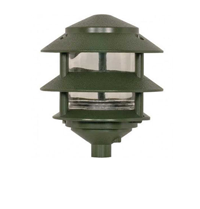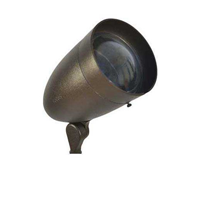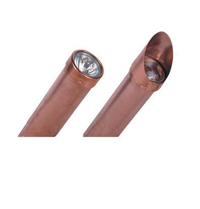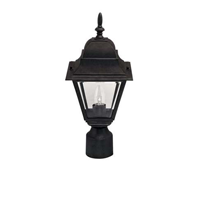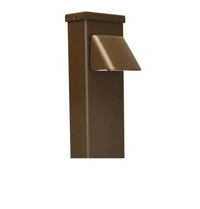About Garage Lights
Garages are often used for many purposes other than parking vehicles, and adequate lighting is very important. There are many types of garage light fixtures, ranging from compact strip lights that can be installed in narrow spaces, to potent high bay fixtures for garages with taller ceilings. The best option will depend on how your garage is built, and also its construction. You must also consider moisture conditions, since humidity can damage fixtures without a suitable housing.
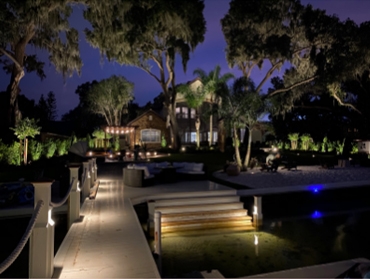 There are many ways to use light fixtures creatively in building exteriors, and the following are some landscape lighting ideas to consider for your projects:
There are many ways to use light fixtures creatively in building exteriors, and the following are some landscape lighting ideas to consider for your projects:
-
Highlighting specific outdoor features like trees, garden plants, ornaments, wall decoration, fountains, staircases and statues.
-
Using evenly spaced fixtures to light the edges of outdoor paths and walkways.
-
Using bollards and lampposts to provide uniform lighting in outdoor social areas.
Landscape lighting can be found in areas like decks, gardens, patios, porches and backyards. By picking the right products, you can create any type of outdoor atmosphere. Some landscape fixtures are designed to be visible, while others blend with vegetation and you can only see their light beams.
Types of Landscape Lighting Fixtures
The following are some of the best lights for garage ceilings, and the installation procedure will depend on the specific product you choose. There are recessed, surface-mounted and suspended options, and some garage lights can be installed on walls or below cabinets.
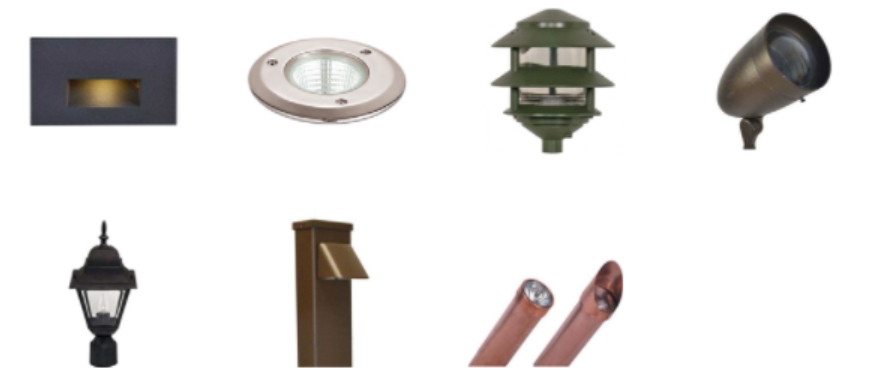
Step Lights: These light fixtures are designed to be used with stairs, as implied by their name. Other than having a decorative function, they prevent falls by making each step visible.
In-Ground Lights: These fixtures are designed for a ground installation with buried cables. This makes them an ideal option when you need a light source that blends in with plants and decorative elements.
Pathlights: Landscape path lighting also accomplishes a dual function of decoration and safety. These fixtures improve the appearance of outdoor paths, while keeping them visible and preventing trips and falls.
Directional Spot Lights: These fixtures are characterized by their directed light beam, which makes them ideal for highlighting specific plants and design elements.
Stake and Deck Lights: As their name suggests, these light fixtures are designed to be installed and wired easily in outdoor decks.
Post Lights / Bollards: These landscape fixtures are used to provide uniform lighting in outdoor areas. Post lights and bollards have the same basic design - a lamp mounted above a post. However, bollards are smaller, in case your landscaping design needs a light source closer to the ground.
Landscape Surface Lights: These fixtures are designed to be mounted on surfaces like walls and roof structures.
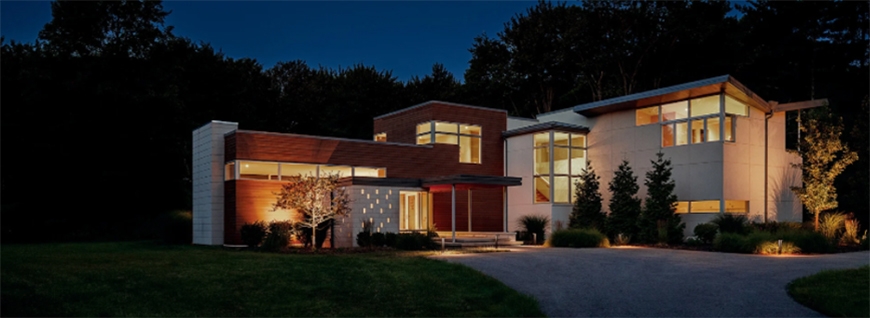
What Voltage Is Used by Landscape Lights?
Many landscape lights are designed to use the AC power supply directly, but you can also find low-voltage options.
-
If you’re planning a DIY project, 12-volt landscape lighting fixtures are strongly recommended, since their low voltage is much safer to handle.
-
On the other hand, if you’re considering 110V LED landscape lighting, the installation must be completed by a qualified electrician.
You will need a step-down transformer to use low voltage landscape lighting. To ensure electrical safety, the transformer should be wired properly and protected by a ground-fault circuit interrupter (GFCI).
Some lighting manufacturers offer landscape fixtures with a built-in solar panel and battery. No Electrical wiring is not required in this case, since the light fixtures generate their own charge. However, solar-powered lights are only effective in spots that get decent sunshine during the day. Otherwise, they will not generate enough charge to stay on at night.
-
For example, landscape lights with solar panels are not recommended in a property with many tall trees, since most of the sunlight will be blocked.
-
In this case, you need a wired lighting system to achieve a constant power supply.
Advantages of LED Landscape Lighting
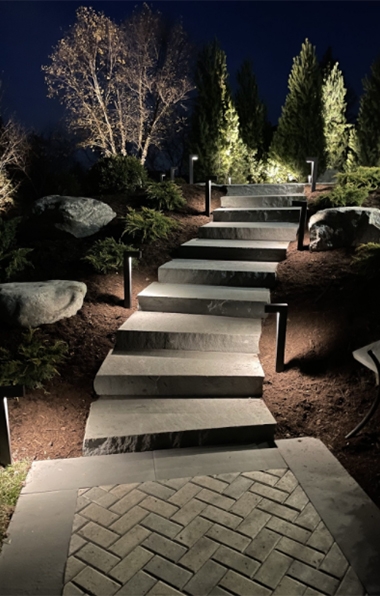 LED landscape lights have many performance features that set them apart from other options, especially when used outdoors for decorative purposes.
LED landscape lights have many performance features that set them apart from other options, especially when used outdoors for decorative purposes.
-
LEDs save on power bills with their high energy efficiency, like in any other lighting application.
-
LEDs are switched on at full brightness, with no flickering or warmup, and this makes them more reliable.
-
LEDs can be manufactured to produce any light color and beam shape, and there are also products with an adjustable color temperature. This feature can be used creatively for landscape lighting, and the possible designs are only limited by imagination.
-
LEDs emit less heat than halogen, HID and fluorescent lamps. This makes them a safer option for landscape lighting - plants are not damaged by heat, and the risk of fire is minimized.
-
LEDs have a much longer service life than other lamp types. This means they can operate for many years before you need a lamp replacement. On the other hand, when a landscape lighting system uses lamps with a short service life, you must constantly move plants and decorative elements to replace them.
Some landscape fixtures can be upgraded to LED by simply replacing their lamp. For example, there are LED retrofit lamps for post lights with HID bulbs, and they can achieve energy savings of over 60%.
Recommendations When Buying Landscape Fixtures
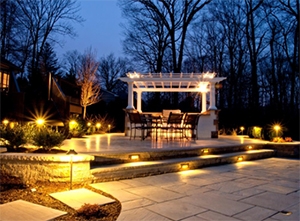 LED landscape lights are installed outdoors, and they are exposed to dirt, rain and insects. For this reason, you should look for products with a dust-tight and weatherproof enclosure. Landscape fixtures with an IP65 rating are hermetically sealed against small particles, and they are not damaged when splashed with water - this means you don’t have to worry about them when watering plants.
LED landscape lights are installed outdoors, and they are exposed to dirt, rain and insects. For this reason, you should look for products with a dust-tight and weatherproof enclosure. Landscape fixtures with an IP65 rating are hermetically sealed against small particles, and they are not damaged when splashed with water - this means you don’t have to worry about them when watering plants.
The type of voltage supply is also an important factor when comparing landscape fixtures. Unless you’re a professional electrician, you should use low voltage fixtures for any DIY project.
You must also decide how your landscape fixtures will be controlled. Many products are compatible with photocells, which means they are switched on automatically after sunset. Alternatively, you can use time-based controls.








